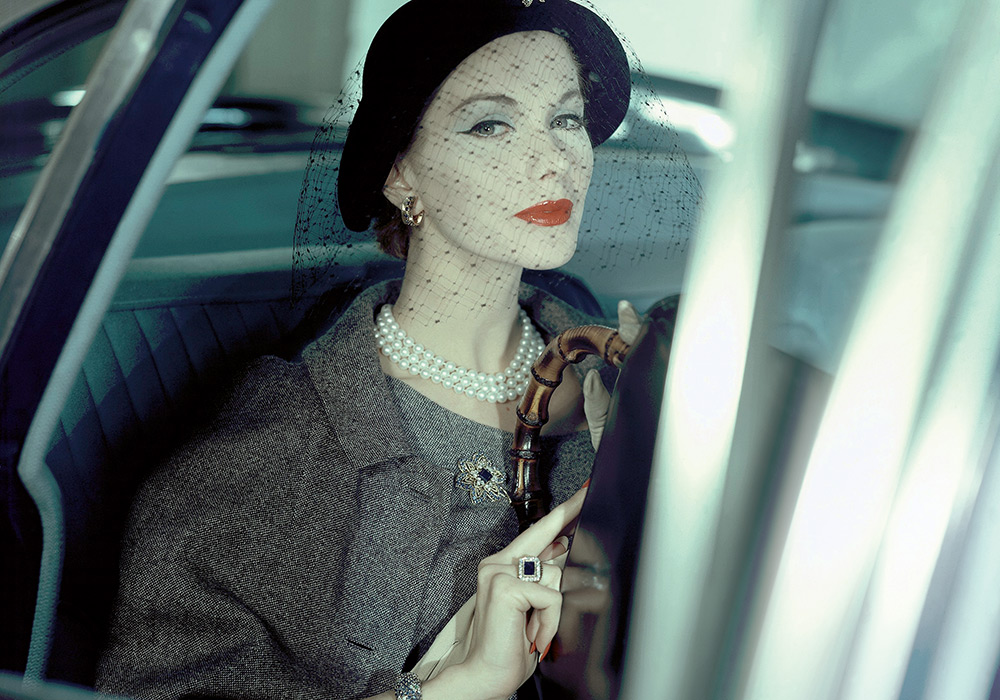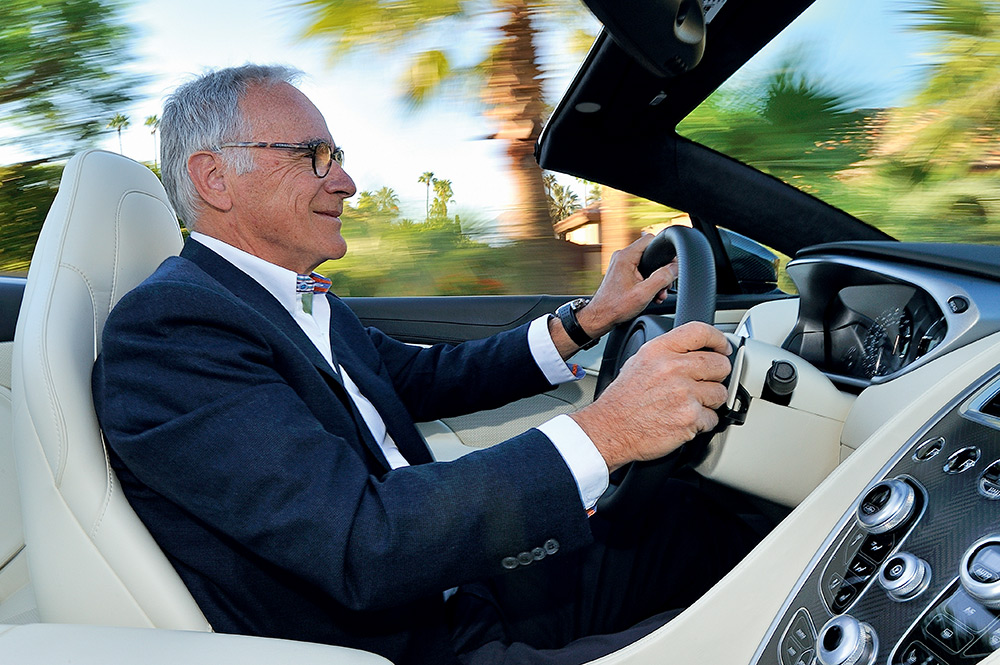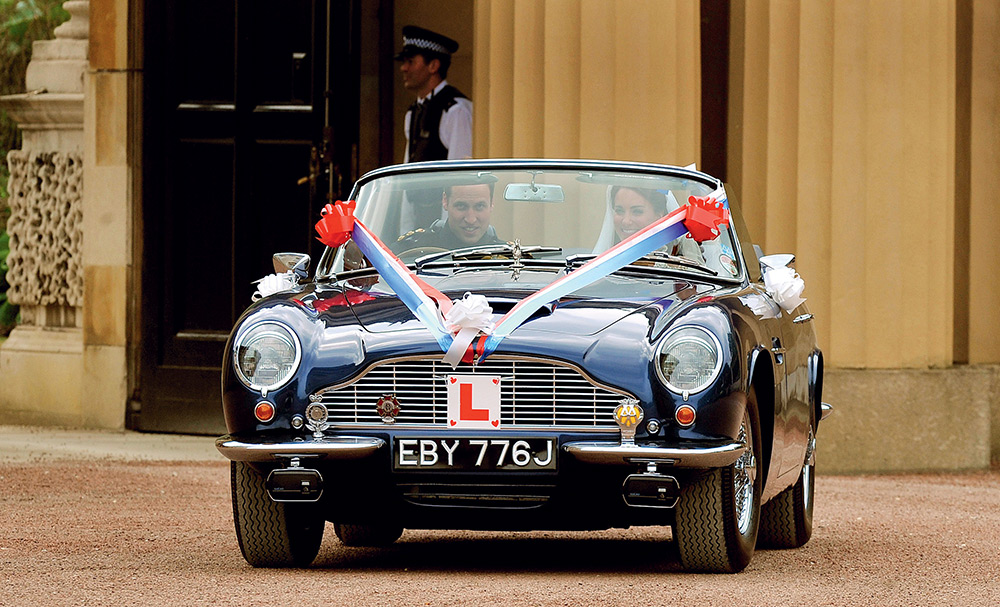Previous Article
Next Article
- AM WORLD
- FEATURES
CENTENARY 90's TO PRESENT
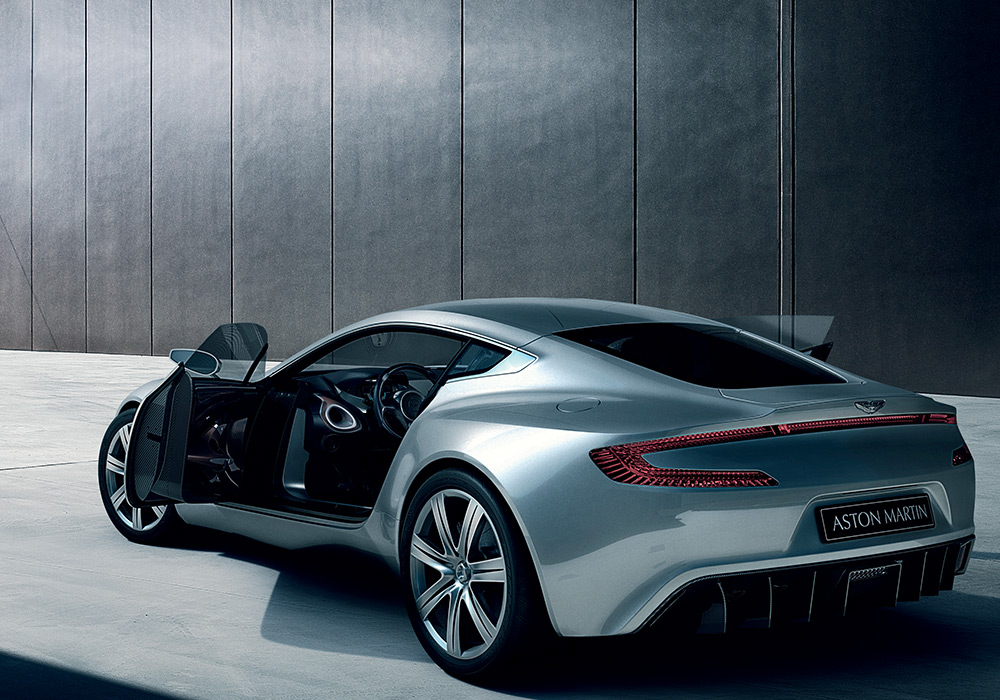
The sumptuous and elegant lines of the ultimate hypercar, the One-77
FORWARD THINKING
Richard Meaden completes his history of Aston Martin with a look back over the past 25 years, including Ford ownership and the exciting new era under Dr Ulrich Bez
New beginnings: Aston Martin had been an independent manufacturer for 74 years when the Ford Motor Company purchased a 75 per cent share in 1987. Peter Livanos and Victor Gauntlett had come to realise that the next generation of Aston Martins required significant investment: competition was stronger than ever, the latest safety and emissions legislation required greater research and development teams and new technologies had to be adopted in order for Aston Martin to take its final step towards stability. It was the right time for a new partnership and Ford’s commitment to rejuvenate Aston Martin repaid the faith shown by Gauntlett and Livanos. In the interests of continuity, Victor Gauntlett oversaw the quiet revolution in his incumbent role as Chairman until he was replaced by the former vice-president of the Ford Motor Company, Walter Hayes. Hayes’s CV made him the perfect fit for Aston Martin. He had been involved in the GT40 Le Mans programme, the all-conquering Ford Cosworth DFV Formula 1 engine project and had enthusiasm, ability and a deep-rooted passion for motorsport.
Initially it was a quiet revolution—but one that moved quickly. The Virage was already under development when Ford came on board and its programme continued as planned. The car was launched in 1988 with a 330bhp four-valve head development of the trusted V8 engine. This was later joined by a 6.3-litre engine option and a Volante derivative. A mighty twin-supercharged 550bhp Vantage followed shortly after. However, the Virage was still a large and relatively heavy sports car, painstakingly hand built at Newport Pagnell in the traditional way. The future, the real future, needed to bring that meticulous craftsmanship and bespoke detailing into a new, more accessible, larger-volume concept. That concept was the DB7 and it came to define the Ford era.

Victor Gauntlett oversaw the smooth transition to Ford ownership before stepping down as Chairman.
The stunning design was unveiled at the Geneva Auto Salon in 1993 with production starting in
1994. More compact, lighter, more agile but still just as refined and usable as the Virage family, the supercharged six-cylinder DB7 was built at a new facility in Bloxham, near Banbury in Oxfordshire. It was a car that demonstrated a depth of engineering resource and a design direction that reconnected
Aston Martin with the earlier DB cars—cars that raced successfully at the highest level and captured the imagination of millions as the transport for a certain 007…
Finally, Aston Martin had the solid foundations that were required to succeed in the long term, and in 2000 a new leader began his quest to transform the famous sports car manufacturer once more. This new and dynamic leadership would utilise lessons from the past but look unerringly to
the future and forward towards the agility and focus of a new and exciting era of independence and global success.
A modern, thriving Aston Martin
Aston Martin began the new millennium with Dr Ulrich Bez appointed as Chairman and Chief Executive to lead the business into the modern era. Dr Bez’s experience at Porsche, where he was involved with F1 and Le Mans programmes, and Daewoo, where he helped to rapidly roll-out a new infrastructure, would be invaluable tools in finally fulfilling Aston Martin’s global potential. Engineer, racer, enthusiast and businessman, Dr Bez had the spirit and determination of his predecessors married to a clear and ambitious plan to create the Aston Martin that they might have dreamt about.
The first of the truly modern Aston Martins was the V12 Vanquish, which was launched in 2001.
It adhered to all the Aston Martin traditions—front engine/rear-wheel drive, muscular but elegant styling and with an understated luxury—but a radically new and much lighter bonded aluminium chassis and a significantly revised 6-litre V12 ushered in a different era for Aston Martin. It featured a body tub made from extruded aluminium and carbon fibre with extensive use of composite materials throughout the crash structure. This extremely rigid and safe body-shell was then clothed in hand-finished superformed aluminium panels. With a 460bhp V12 engine and six-speed automated manual gearbox and a kerb weight of 1835kg, the Vanquish was capable of 190mph. The Vanquish S arrived in 2005 and with a revised 520bhp engine it was the first production Aston Martin to exceed 200mph.
The V12 Vanquish was handmade at the long serving Newport Pagnell factory, but Dr Bez knew that a modern Aston Martin needed a world class and flexible production facility. In 2003 Aston Martin finally opened its first purpose-built facility in the company’s history. The global headquarters in Gaydon, Warwickshire was a significant step for Aston Martin, as Dr Bez explained at the time: “Gaydon is the future of
Martin. It combines cutting-edge technology with hand-craftsmanship and tradition. It is probably the best facility of its type in the world, and the perfect showcase of how to design and build innovative sports cars.”
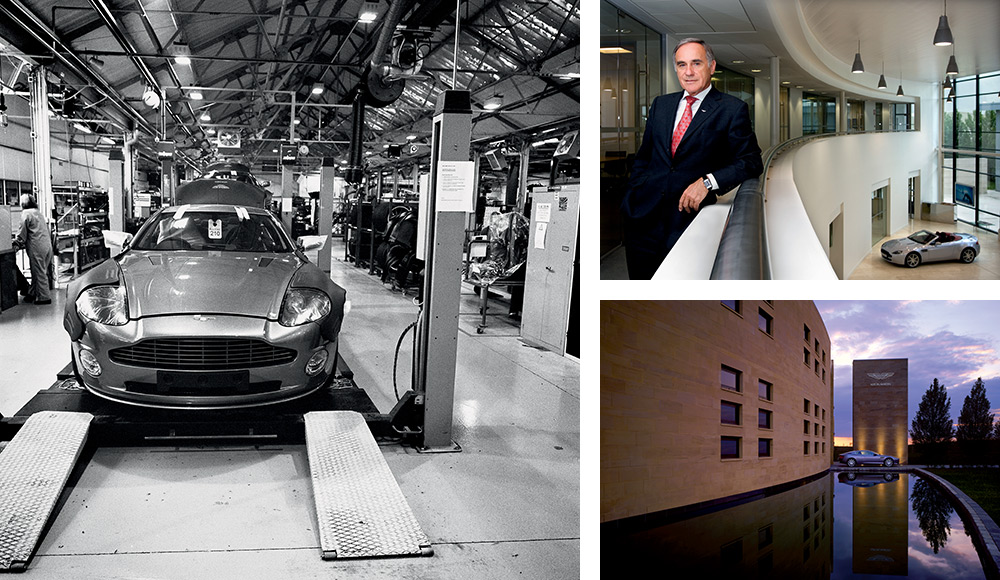
Above left: the final cars roll off the production line at Newport Pagnell. Top: CEO Dr Ulrich Bez has overseen the new era since his arrival in 2000. Above: the purpose-built new factory at Gaydon, which opened in 2003.
The bespoke nature of every Aston Martin is retained and customers have great freedom in specifying every detail of their car. In 2004 Aston Martin’s engine plant in Cologne, Germany, commenced production of all V12 and V8 engines. The DB9 was the first Aston Martin to use the innovative and highly flexible VH aluminium chassis architecture. In 2005 it was joined by the exceptionally dynamic V8 Vantage, which brought Aston Martin within the reach of a whole new audience and allowed the marque to define a new type of sportscar for the modern era. The 4.3-litre V8 that powered the Vantage produced 380bhp in combination with an unmistakable Aston Martin soundtrack. A clear and comprehensive Aston Martin range was emerging. Motorsport was not neglected in this bold vision of Aston Martin and in 2005 the DBR9—built by the newly formed Aston Martin Racing—marked a sensational return to the racetrack. In 2007 and 2008 the DBR9 would take class wins at the Le Mans 24-hour. The race programme also took Aston Martin back to the famous and gruelling Nürburgring with near-standard production versions of the V8 Vantage and latterly the V12 Vantage and V12 Zagato. The company is committed to proving the dynamism and durability of Aston Martin road cars in the toughest race environment in the world. Before the 2012 Nürburgring 24, Dr Bez made it clear why the Nürburgring is so important: “Our 100 per cent finishing record in 13 starts in one of the world’s toughest endurance races is remarkable; truly a testament to the reliability of our cars and the efforts of our people.” Aston Martin’s permanent Nürburgring Test Centre opened in 2008 and road cars continue to undergo intense development work on this uniquely challenging circuit.
As well as the return to the racetrack, there was a return to the silver screen in 2006. Fittingly, the James Bond franchise was in the midst of a radical overhaul and Daniel Craig’s tougher, more believable and more exciting version of James Bond drove (and flipped) Aston Martin’s next performance flagship, the 510bhp DBS. Casino Royale went on to become the biggest box office success in the Bond franchise’s history at that time. Aston Martin was also selling more cars than at any time in its history and the brand’s global recognition was at an all-time high. With the company in the ascendancy, Ford sold it to a consortium of two major international investment houses, Investment Dar and Adeem Investment. The consortium was led by Chairman David Richards and Dr Ulrich Bez continued to lead the management team as Chief Executive Officer.

The DB9 was the first Aston Martin to use the new VH aluminium chassis architecture
Aston Martin was returning to an era of independence but this time with a complete range, a world class global headquarters and sound financial support. The agility, focus and independence would see partnerships flourish and further expansion of the Aston Martin family with the four-door Rapide and the One-77 hypercar, perhaps the ultimate expression of Aston Martin’s craftsmanship, technology and design ethos. All are imbued with the brand’s key features of Power, Beauty and Soul, combining pure performance and true sporting ability with refinement, luxury and exceptional beauty. In 100 years from now we hope that this timeless formula will remain the same.

The innovative and highly flexible VH aluminium chassis architecture which underpins the Aston Martin family was introduced in 2004
CENTENARY
Previous Article
Next Article
- AM WORLD
- FEATURES

